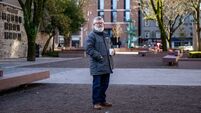Every teen should be made to read Louise O’Neill's book 'Asking For It'
It’s about rape. Not the kind of rape we think of when we think about rape — the unknown attacker, the dark alley — but the kind that actually happens. Where the woman knows the man or men. According to Amnesty International, Ireland has the lowest rape conviction rate — 1% — in the EU. One percent? I didn’t know that until I read O’Neill’s novel. One percent. A figure that is like some grotesque punchline.
Asking For It should be read in schools. It is about real teenagers living now in real — made up characters, obviously, as it’s fiction — but modern teenagers living in modern with Snapchat and Facebook and Instagram and MDMA and vodka and little idea about what consent means. It’s the story of a good looking teenager, vain and self obsessed and insecure and desperate to be seen as cool by the older crowd (because we shouldn’t have to like rape victims in order to convict rapists). It’s how she drinks and takes drugs and has lots of consensual sex. She’s not the Virgin Mary.
And it’s about what happens when this good looking girl, off her face at a party, is gang raped by her friends. She doesn’t remember what happened, but next day there are photos all over social media. She would rather forget it — she doesn’t want to risk unpopularity. They are nice boys from good families, things just got a bit out of hand, says her mother at one point. The setting is a small fictional Irish town — O’Neill herself is from Clonakilty — and what happens when the town’s nice boys from good families commit gang rape.
The raped girl becomes a digital and broadcast commodity, championed by feminists, discussed on radio and television, featured in newspapers, hashtagged on Twitter, shared and shared and shared on Facebook. It’s about privacy, consent in relation to alcohol and drugs, physical and digital boundaries. It’s about the loss of individual identity as she becomes a media construct, and how this plays out in the small Irish town where the solicitor and the doctor and the guards and the girl’s family all know each other, have grown up together.
But mostly it’s about misogyny. It’s about how a character who is not virtuous or sympathetic, and looks hot and off her head, is asking for it. It’s about how boys will be boys, and how girls need to take responsibility for boys being boys. It’s about recklessness and risky behaviour being the crime, rather than rape. It’s about victim blaming, and the culture of what-did-she-expect.
I will be urging my 15-year-old daughter and all her friends to read it.















